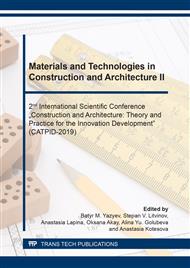p.446
p.452
p.458
p.464
p.471
p.477
p.482
p.491
p.496
The Application of Nanostructured Modifier Additives Based on Zeolite-Bearing Tuffs in Asphalt
Abstract:
Often, the quality of contemporary bitumen binders cannot meet the performance requirements for hot mixed asphalt (HMA) concrete intended for severe application conditions. Therefore, the companies involved in the road construction and HMA producers use various chemical admixtures and modifiers to enhance the characteristics of bitumen. These materials are capable to enhance the adhesion between the binder and aggregates, reduce water saturation, as well as increase water and freeze-thaw resistance of HMA. For example, water resistance is considered to be one of the controlling parameters for high-quality asphalt applications. The use of these admixtures has little effect on the rheological characteristics and the temperature range of the binders. As a result, in the regions with hot summers and hot climate zones asphalt pavements are subjected to significant permanent deformations such as rutting. In the regions with cold winters, asphalt pavements can develop a critical fragility resulting in the crack propagation and failure of asphalt pavement. This research reports on the use of nanomodified hybrid additive with zeolite-bearing tuffs used as a mineral filler to control the HMA performance. An effective technology that includes the modification of zeolite-bearing precursor and manufacturing of the hybridized material with nanocarbon was developed. This research demonstrates the effects of carbon nanomaterials on pore structure and surface morphology of the modified hybrid additive. Few methods of the additive incorporation into asphalt mix was proposed. The results of the reported study confirm an improvement of the strength and water resistance performance of asphalt with developed nanohybrid additive.
Info:
Periodical:
Pages:
471-476
Citation:
Online since:
December 2019
Authors:
Price:
Сopyright:
© 2020 Trans Tech Publications Ltd. All Rights Reserved
Share:
Citation:


